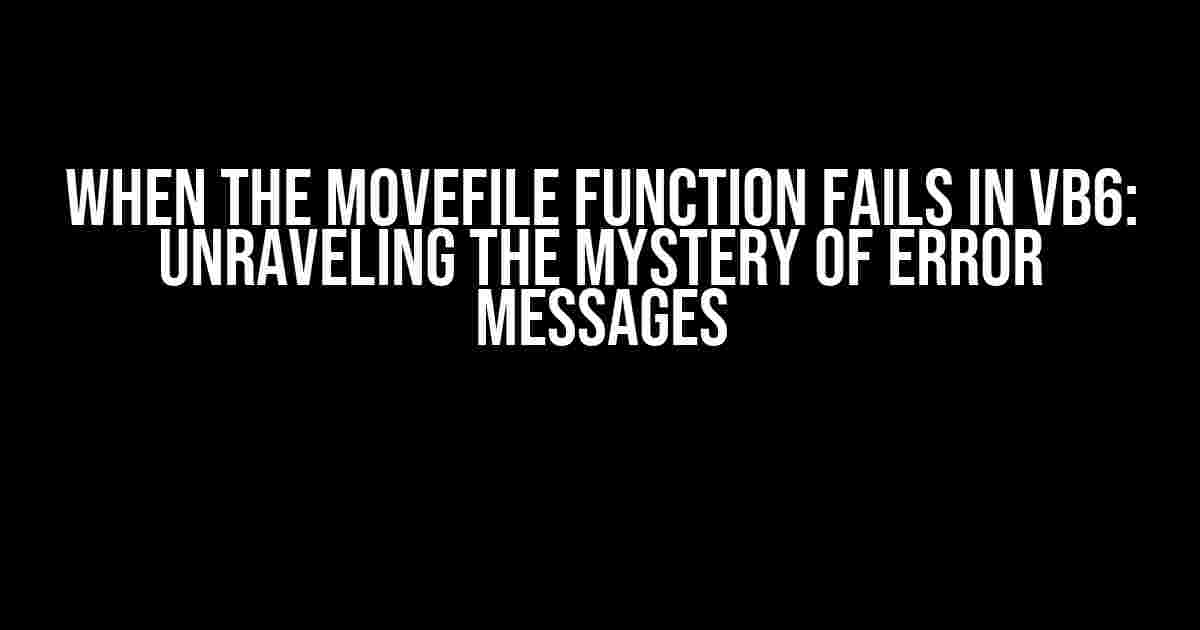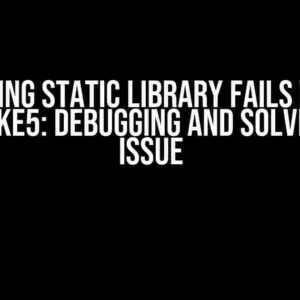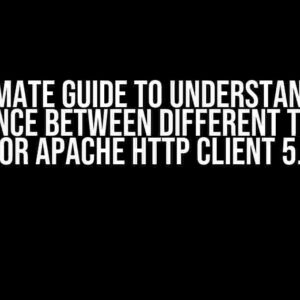Are you tired of dealing with pesky error messages when using the MoveFile function in VB6? You’re not alone! Many developers have stumbled upon this issue, only to find themselves lost in a sea of cryptic error codes and unclear explanations. Fear not, dear coder, for we’re about to embark on a journey to demystify the MoveFile function and uncover the secrets behind its failures.
What is the MoveFile Function?
Before we dive into the nitty-gritty of error handling, let’s take a step back and understand what the MoveFile function does in VB6. The MoveFile function, as its name suggests, moves a file from one location to another. It’s a simple yet powerful tool that’s essential for many file management tasks. The function takes two main arguments: the source file path and the destination file path.
Declare Function MoveFile Lib "kernel32" Alias "MoveFileW" (ByVal lpExistingFileName As String, ByVal lpNewFileName As String) As Long
Error Handling: The Basics
When the MoveFile function fails, it returns an error code that can be deciphered using the GetLastError function. The GetLastError function returns the last error code generated by the operating system. In the context of the MoveFile function, this error code can help you identify the root cause of the failure.
Dim errCode As Long
errCode = GetLastError()
Now that we have the error code, how do we interpret it? That’s where the `FormatMessage` function comes in. This function takes the error code as an argument and returns a human-readable error message.
Dim errMsg As String
errMsg = FormatMessage(errCode)
Common Error Codes and Their Meanings
Now that we’ve covered the basics of error handling, let’s delve into the most common error codes you might encounter when using the MoveFile function in VB6.
| Error Code | Error Message | Description |
|---|---|---|
| ERROR_FILE_NOT_FOUND (2) | The system cannot find the file specified. | The source file does not exist or is inaccessible. |
| ERROR_PATH_NOT_FOUND (3) | The system cannot find the path specified. | The source or destination file path is invalid. |
| ERROR_ACCESS_DENIED (5) | Access is denied. | The application lacks the necessary permissions to move the file. |
| ERROR_INVALID_HANDLE (6) | The handle is invalid. | The file handle is invalid or has been closed. |
| ERROR_ALREADY_EXISTS (183) | File already exists. | The destination file already exists, and the operation cannot overwrite it. |
Error Code 32: A Special Case
Error code 32 is a special case that warrants extra attention. This error code is often returned when the MoveFile function fails due to a sharing violation. In other words, the file is currently in use by another process or application, and the operating system cannot move it.
To resolve this issue, you can try the following:
- Check if the file is open in another application or process.
- Close any unnecessary applications or processes that may be using the file.
- Use the `LockFile` function to gain exclusive access to the file.
- Implement a retry mechanism to attempt the move operation again after a short delay.
Best Practices for Error Handling
Now that we’ve covered the most common error codes and their meanings, let’s discuss some best practices for error handling when using the MoveFile function in VB6.
- Always check the return value of the MoveFile function. If the function returns 0, it indicates failure, and you should retrieve the error code using GetLastError.
- Use meaningful error messages. Instead of displaying a cryptic error code, use the FormatMessage function to retrieve a human-readable error message.
- Log error messages for debugging purposes. This can help you identify and troubleshoot issues more efficiently.
- Implement retry mechanisms for intermittent errors. This can help mitigate issues caused by temporary file locks or network connectivity problems.
- Test your error handling code. Don’t assume that your error handling code works correctly – test it with different scenarios to ensure it’s robust and reliable.
Conclusion
In conclusion, the MoveFile function in VB6 can fail due to various reasons, and understanding the error codes and their meanings is crucial for effective error handling. By following the best practices outlined in this article, you can write more robust and reliable code that can handle errors with ease. Remember, error handling is not a one-time task – it’s an ongoing process that requires attention and care to ensure your application remains stable and efficient.
Don’t let error messages hold you back from creating amazing applications. With the knowledge and skills gained from this article, you’ll be well-equipped to tackle even the most challenging file management tasks in VB6.
Frequently Asked Question
VB6 errors got you down? Don’t worry, we’ve got you covered! Here are some frequently asked questions about the MoveFile function in VB6.
Q1: What error does the MoveFile function return when it fails in VB6?
When the MoveFile function fails in VB6, it returns an error code, which can be captured using the Err object. The error code can be one of several possibilities, including file not found, permission denied, or disk full.
Q2: How can I handle errors when using the MoveFile function in VB6?
To handle errors when using the MoveFile function, you can use error-handling code, such as On Error Goto or Try…Catch blocks, to capture and respond to errors. You can also use the Err object to get more information about the error and take appropriate action.
Q3: What are some common reasons why the MoveFile function fails in VB6?
Some common reasons why the MoveFile function fails in VB6 include file not found, permission denied, disk full, file in use, or invalid file path. Additionally, issues with the file system, such as file corruption or network connectivity problems, can also cause the MoveFile function to fail.
Q4: Can I use the MoveFile function to move files across different drives or networks?
Yes, the MoveFile function can be used to move files across different drives or networks, as long as the file path is valid and the user has the necessary permissions. However, be aware that network connectivity issues or permission problems can still cause the function to fail.
Q5: Are there any alternatives to the MoveFile function in VB6?
Yes, there are alternatives to the MoveFile function in VB6. For example, you can use the CopyFile function followed by the Kill statement to achieve similar results. Alternatively, you can use the FileSystemObject (FSO) to perform file operations, which provides more flexibility and error-handling capabilities.



